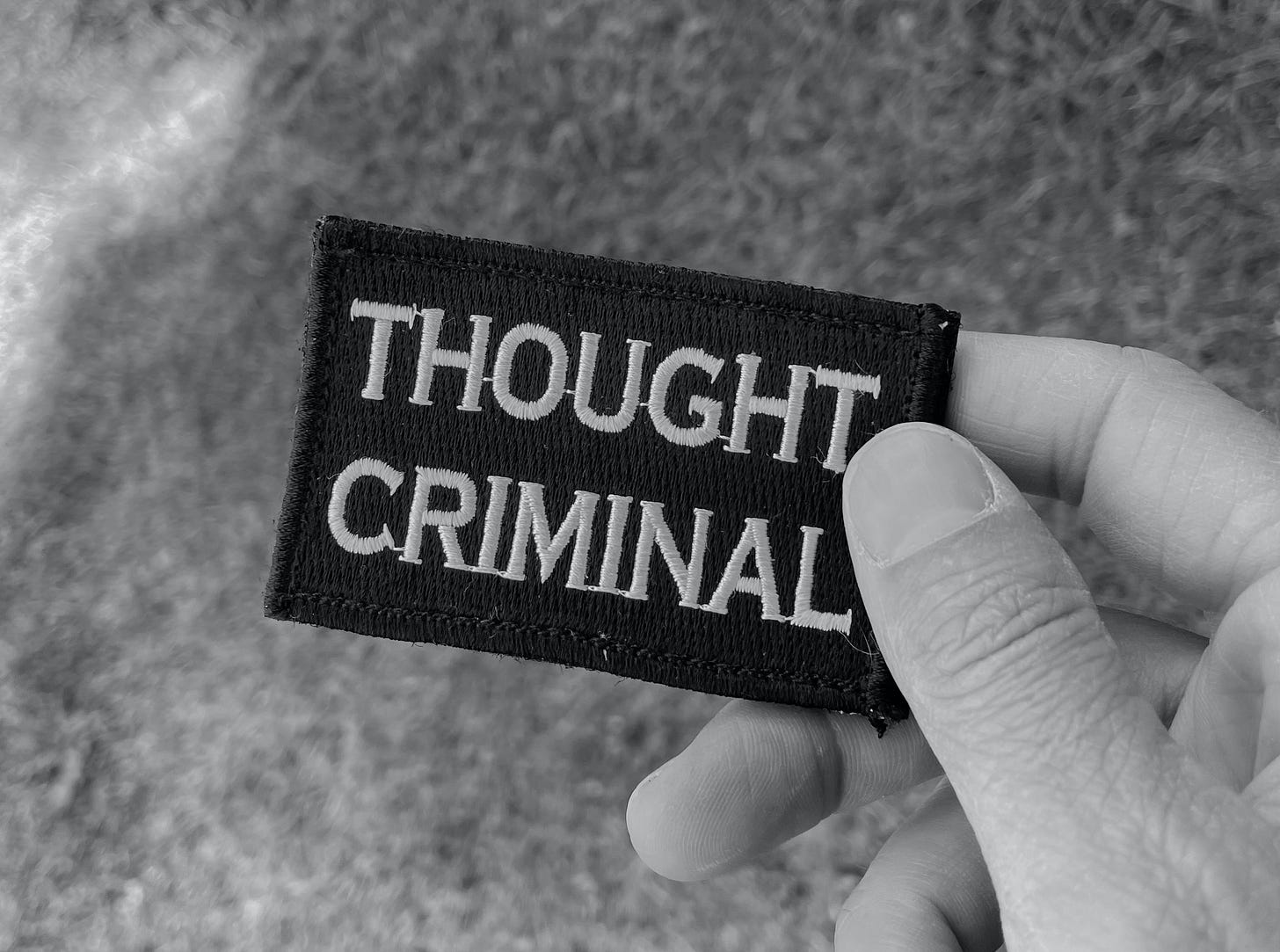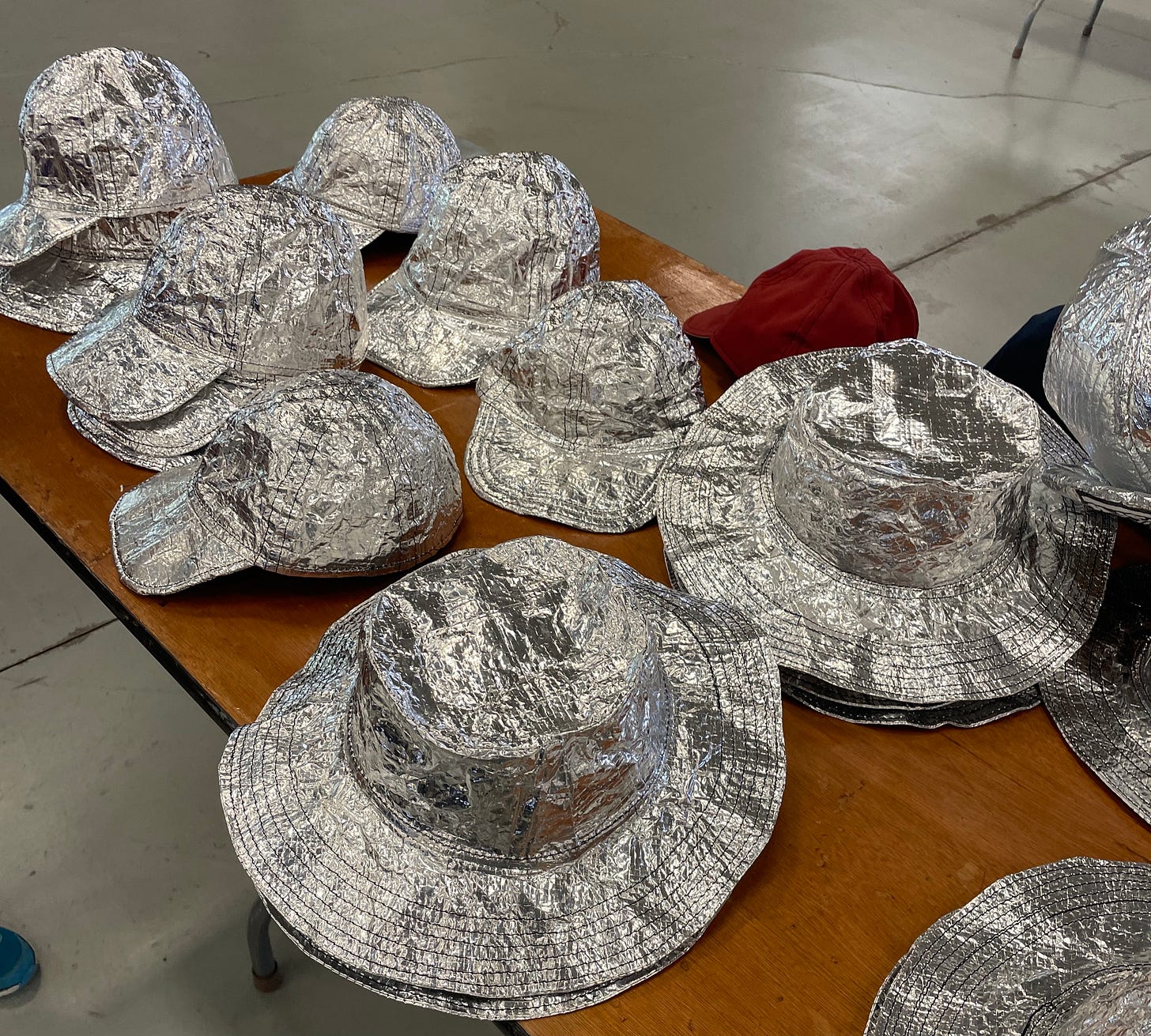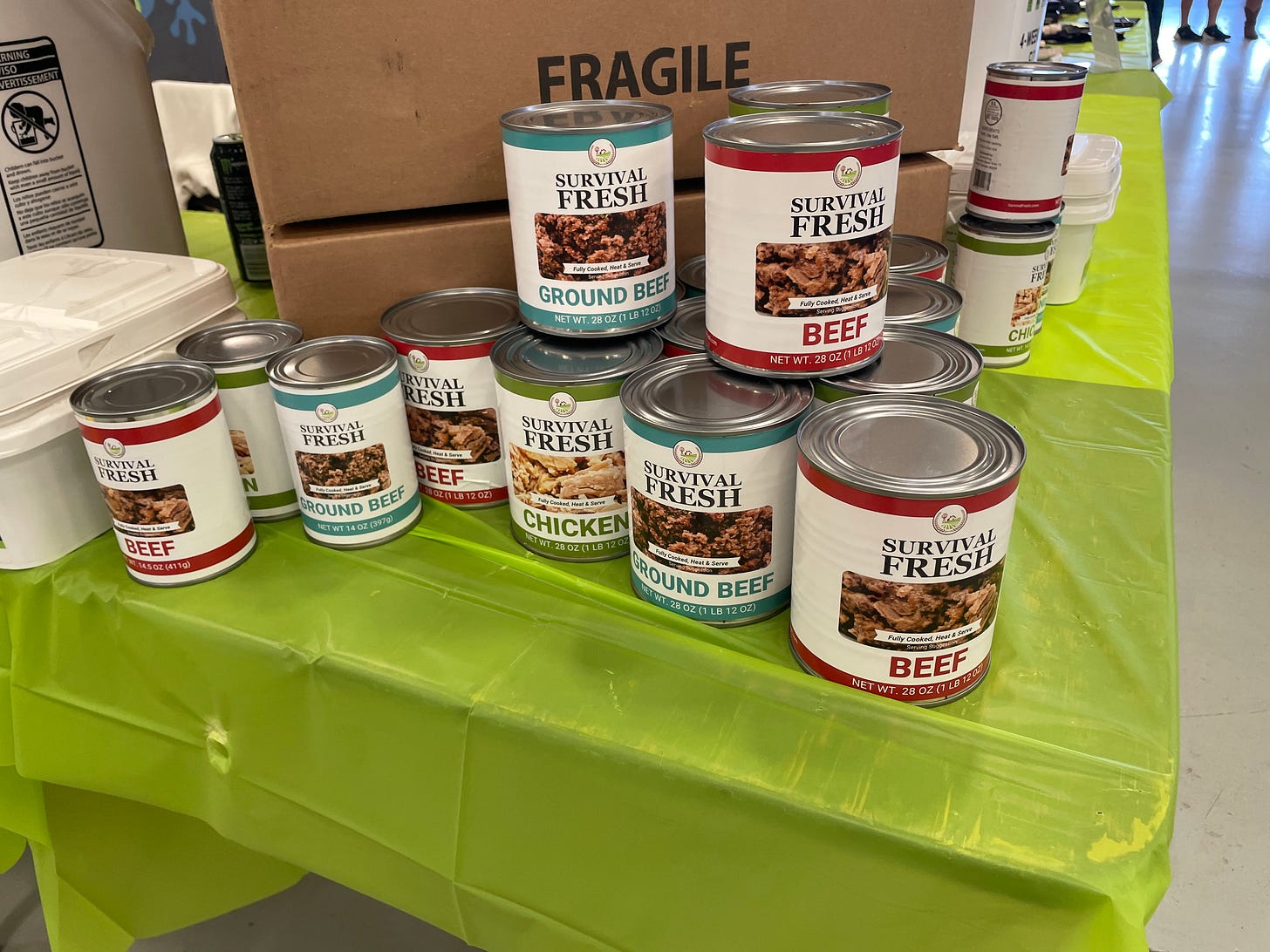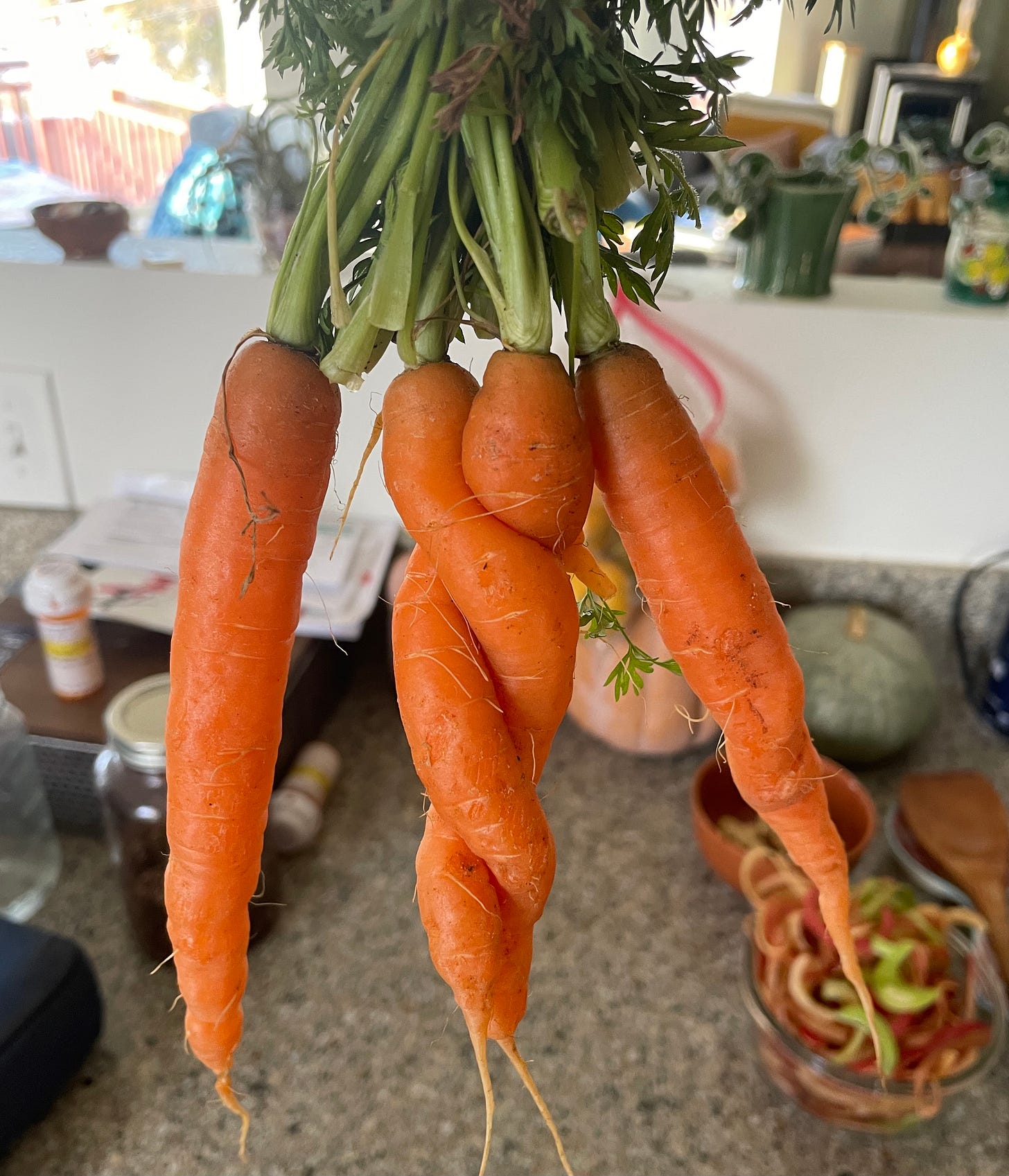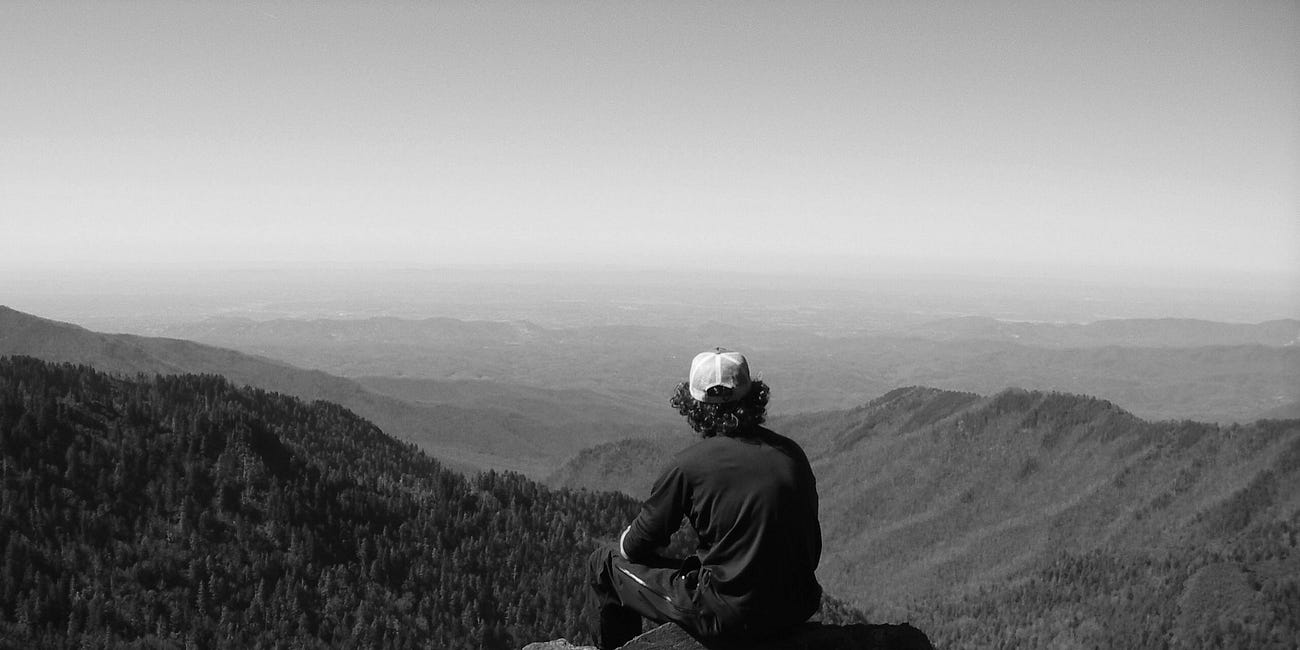A sign cropped up alongside the road: Prepper Convention. “Doomsday preppers,” that is, as in people preparing for the apocalyptic collapse of society, and how one might survive it.
I had to go.
The county fairgrounds often host eclectic gatherings where enthusiasts of dairy goats, quilts, guns, show horses, and antiques find their people—as do those at the regular Saturday farmers’ market—so these survival isolationists queuing up next to the livestock corrals created a nice juxtaposition upon entry.
To set the scene, I’ll catalogue a few of the vendors:
Bunker design planners
Off-the-grid solar setups
Non-perishable food supplies
WWII paraphernalia
Hand-sewn EMF radiation blocking hats
Beef jerky / hot sauce
A long table of weaponry, starting with knives, then transitioning to machetes, swords, battle axes, medieval maces, morning stars and flails
Clearly, multiple cultural circles meet in this Venn diagram. In their basic practicality, a lot of it makes sense; taken to the extreme (the default context within the exhibit hall) . . . well, diminishing returns.
The prime survival mechanism which has gotten humans so far in this world is that we like to make sense of things, of the unknown. It’s in us, an innate desire unlike that of any other creature. That’s why we have myths, legends, religion, science, conspiracies—these things help us make sense in a nonsensical world. Historically, these shared stories have brought us together. But at the prepper convention, you see just the opposite.
One of my best friends says there are two kinds of people in this world: those that think me, and those that think we. And both sides are a product of our culture.
Anthropologists describe culture on a spectrum between “individualist” and “collectivist”—essentially, me vs. we. America falls on the individualist end, to the extreme. After all, we love the self-made man, the hardworking individual who goes it on his own and finds success. And the numbers prove we’re less interested in building community with every year.
So is it any wonder that when we consider the end of society, the vision that draws crowds is that of survival in isolation?
To spend a lot of time preparing for societal collapse, though, is a bit of a self-fulfilling prophecy. When you see everything through the lens of a doomsday scenario, life can look a little grim. As David Petersen writes in his book Heartsblood:
Cities create crowing,
Crowding promotes estrangement,
Strangers spread fear,
Fear breeds contempt.
That’s the part which bothers me—the contempt. And I left the prepper convention bothered that so many people, in a doomsday scenario, are dead set on isolating themselves as far from everyone else as possible.
Then again, maybe I was just hungry.
It was Saturday. The tents of the farmer’s market spread across the parking lot, so I walked over. And as I stared at the fresh vegetables it hit me that, should the apocalypse come, I could either hide away in some bunker, living off four-hundred cans of corned beef hash. Or I can find some good people, build a community, grow some food, and survive like humans have forever.
Make the choice: me vs. we
-Martin
If you liked this one, here’s another . . .
Out of Loneliness
You ever heard that joke: no one talks about Jesus’ true miracle—having twelve close friends in his 30s. I want to laugh, right, but this one hits uncomfortably close to home.


